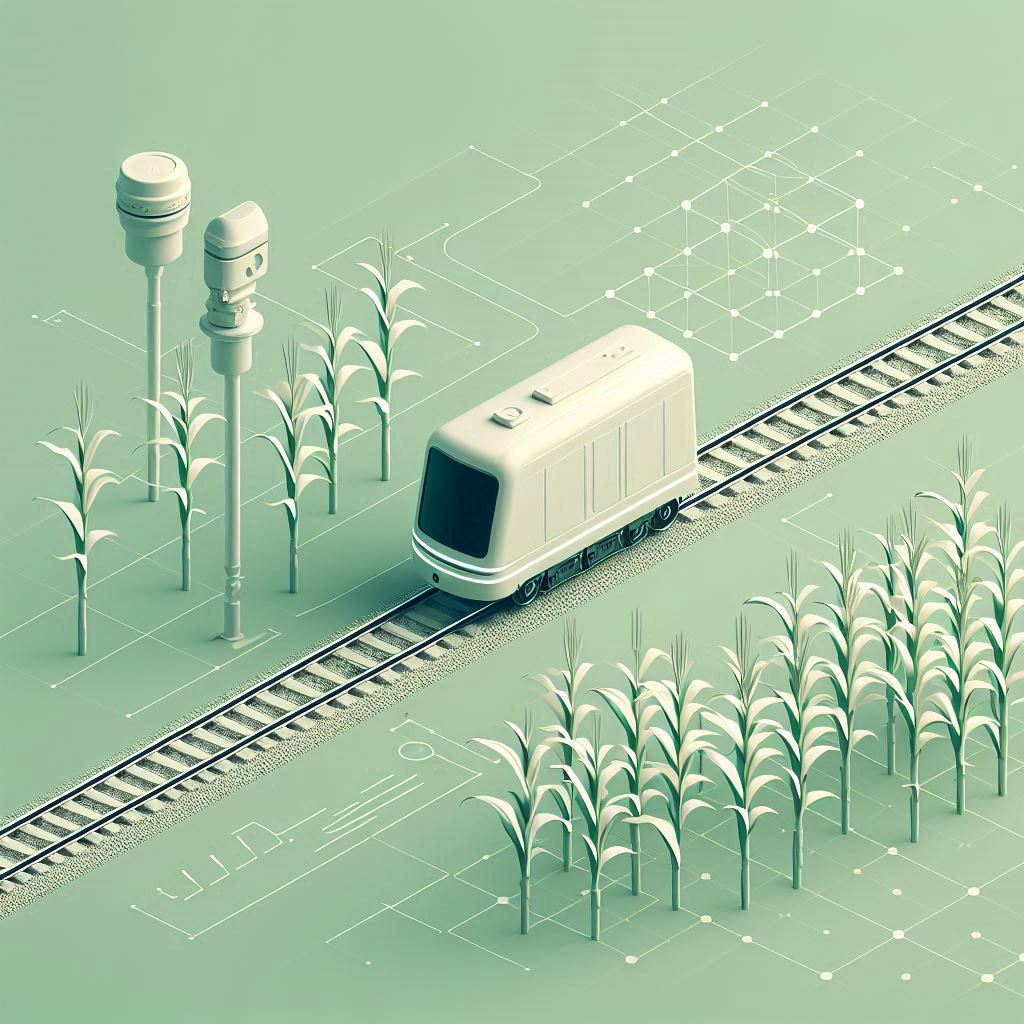The Main Idea
This research introduces a rail-driven high-throughput plant phenotyping platform equipped with LiDAR sensors to enable precise, continuous 3D time-series monitoring of maize canopy structure, enhancing insights into growth dynamics, planting densities, and hybrid performance.
The R&D
In the ever-evolving world of agriculture, innovation plays a vital role in meeting global food demands. Researchers have introduced a game-changing technology: a rail-driven high-throughput plant phenotyping platform (HTPPP) equipped with LiDAR sensors. This marvel allows for precise, real-time, three-dimensional monitoring of maize canopy structures. 🚜🌽
Gone are the days of labor-intensive manual measurements! Let’s dive into how this innovative approach is reshaping maize farming and paving the way for future breakthroughs. 🚀
Why Study Maize Canopies? 🌿
The maize canopy—the umbrella of leaves covering the crop—is crucial for:
- Photosynthesis efficiency: Determines how effectively the plant captures sunlight. 🌞
- Breeding improvements: Aids in selecting crops with desirable traits. 🧬
- Optimized cultivation: Helps refine planting density and management practices. 🌾
Traditional methods for studying canopy dynamics have been manual, time-consuming, and prone to errors. With the HTPPP, researchers can now continuously and accurately monitor canopy growth over time. 🎥✨
The Tech Behind the Magic 🔧📈
The study utilized a rail-driven platform that moves across fields, capturing high-resolution 3D point clouds of maize canopies using LiDAR sensors. Here's how it works:
- Daily Data Capture: Measurements taken three times a day ensure comprehensive coverage.
- Advanced Algorithms: An adaptive sliding window algorithm segments the canopy into plots and rows, ensuring precision.
- Phenotypic Metrics Analyzed:
- Height Measurements: Maximum (Hmax) and mean (Hmean) heights. 📏
- Canopy Cover (CC): Proportion of ground shaded by leaves. 🌳
- Uniformity (CHU): How consistent plant heights are. 🤝
- Marginal Effect (MEH): Variations between border and internal rows. 🔍
Key Findings 📊
The results unveiled fascinating insights into the growth patterns of hybrids, parental inbreds, and crops planted at different densities. Here’s the scoop:
- Hybrids vs. Parental Inbreds
- Hybrids Outperform: Hybrids JNK728 and JK968 showed better height and canopy cover than their parent strains.
- Growth Dynamics: Hybrids grew rapidly early on but reached their height peaks at different times, highlighting distinct growth strategies. 🌟
- Impact of Planting Density
- Higher Density = Taller Plants: Denser plots (S3) exhibited greater height compared to less dense plots (S1 and S2). 🏗️
- Canopy Cover Trends: Increased density resulted in more canopy coverage, a sign of efficient use of space. 🌱
- Uniformity Challenges: Denser planting showed less uniformity, emphasizing the need for density optimization.
- Marginal Effects Matter
- Negative Trends: Border rows often grew shorter than internal rows over time, highlighting competition for resources at plot edges. 🌾
- Hybrids vs. Inbreds: Hybrids showed less stability in marginal effects compared to parental inbreds, requiring tailored management.
Future Prospects 🌍🔮
This cutting-edge phenotyping method has immense potential:
- Precision Agriculture: Farmers can monitor crop health in real time and optimize practices to boost yield. 📡🌾
- Breeding Advancements: Breeders can screen thousands of varieties efficiently, accelerating the development of resilient crops. 🧬
- Environmental Adaptation: Continuous monitoring helps understand how crops respond to varying environmental conditions. 🌦️
Looking ahead, integrating AI and machine learning into these systems could offer predictive analytics, enabling proactive interventions. Imagine a system that not only tracks growth but also recommends actions based on weather forecasts or pest threats! 🤖🌿
Final Thoughts
The rail-driven HTPPP is more than just a tool; it's a revolution in crop monitoring and management. By offering unparalleled accuracy and insights, it promises to transform maize farming, ensuring food security for a growing world. 🌎✨
Concepts to Know
- Phenotyping: Think of it as taking a crop's "selfie" to capture its physical traits like height, shape, and growth patterns. 📸🌾
- LiDAR (Light Detection and Ranging): A high-tech laser scanner that creates 3D maps of objects, like crop canopies, by measuring reflected light. 🔦📊 - This Concept has also been explored in the article "One Filter to Rule Them All: Revolutionizing Safe Quadrupedal Navigation with AI-Powered Safety Filters ⚠️ ✅".
- Canopy: The leafy "roof" formed by the top layer of a plant’s foliage—basically, the crop's sunbathing zone! ☀️🌿
- High-Throughput Plant Phenotyping Platform (HTPPP): A fancy name for a system that collects tons of plant data quickly and accurately, often using advanced sensors. 🚂🌱
- 3D Point Cloud: A digital cluster of points in space that represents the shape and structure of an object, like a plant canopy. 🌌🌳
- Canopy Cover (CC): The percentage of ground shaded by the canopy—think of it as the plant's footprint. 🦶🌿
- Uniformity (CHU): How even the heights of plants are within a group; uniform canopies are the "straight-A students" of the crop world. 📏🌟
- Marginal Effect (MEH): The difference in growth between plants on the edges (border rows) and those in the middle—like comparing city outskirts to downtown. 🏙️🌾
Source: Ma, H.; Wen, W.; Gou, W.; Liang, Y.; Zhang, M.; Fan, J.; Gu, S.; Zhang, D.; Guo, X. Three-Dimensional Time-Series Monitoring of Maize Canopy Structure Using Rail-Driven Plant Phenotyping Platform in Field. Agriculture 2025, 15, 6. https://doi.org/10.3390/agriculture15010006
From: Shanxi Agricultural University; Beijing Academy of Agriculture and Forestry Sciences; National Engineering Research Center for Information Technology in Agriculture.
